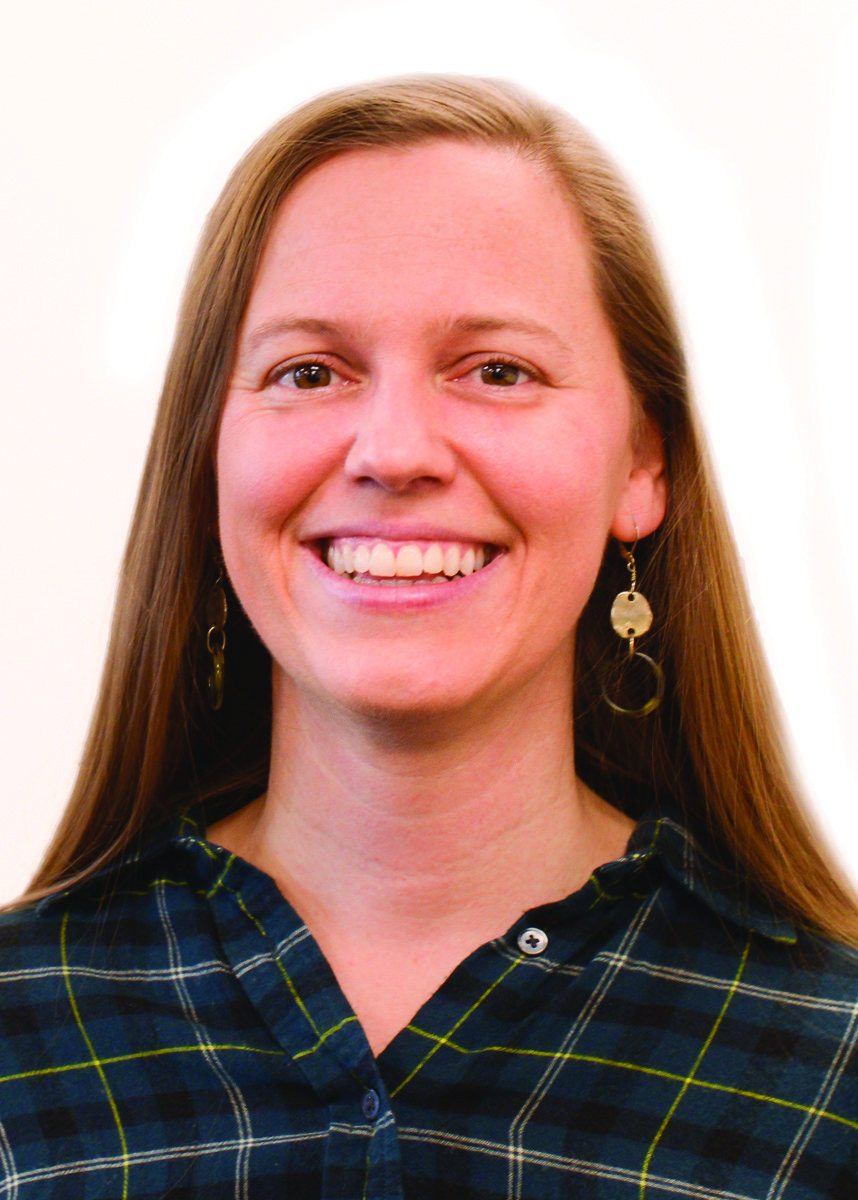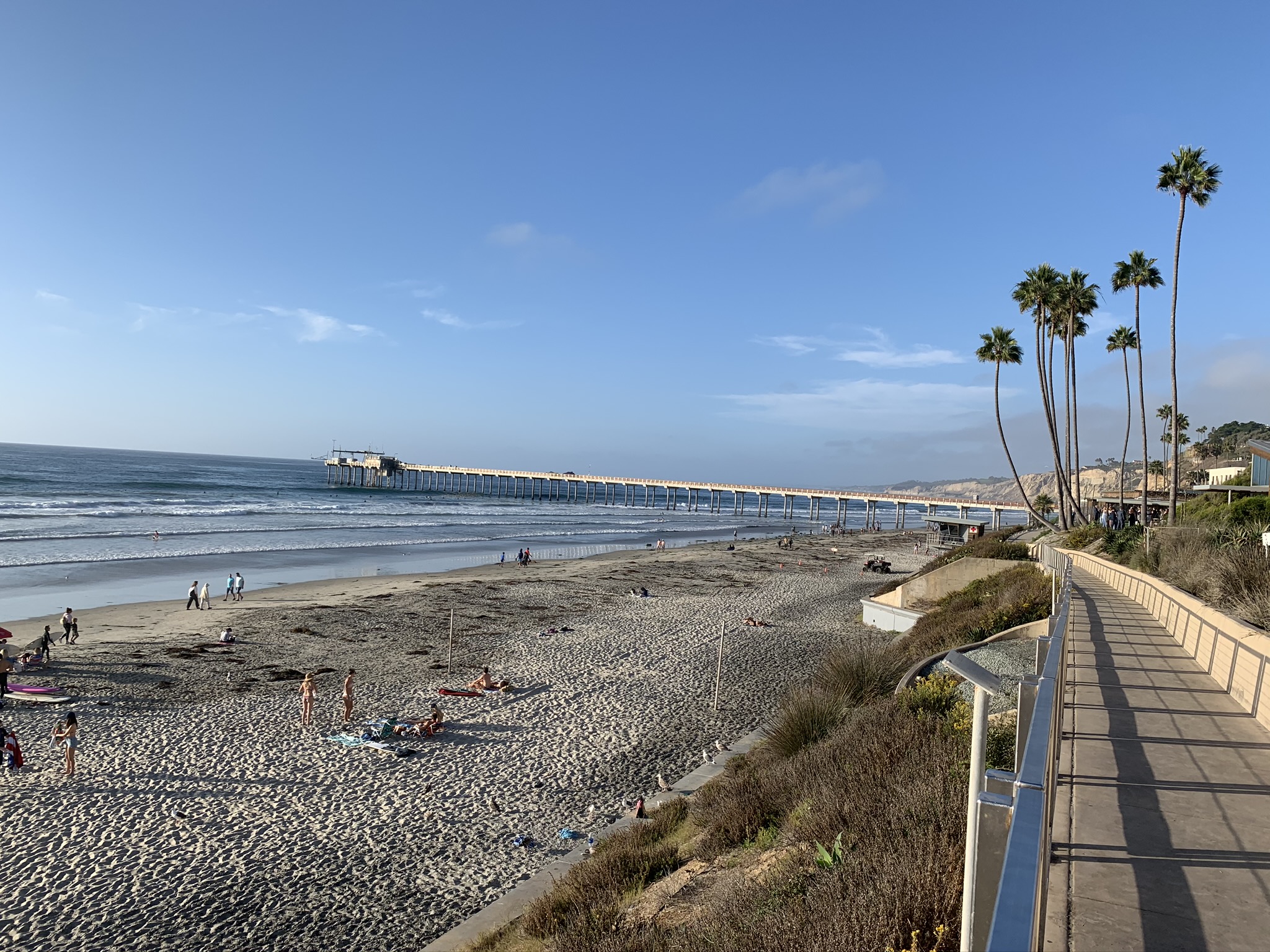Lauren Fimbres Wood on Humanizing Oceanography
By Amy Jacques
February 2020
Name: Lauren Fimbres Wood
Current status: Director of Strategic Communications, Scripps Institution of Oceanography at UC San Diego
Current location: La Jolla, Calif.
Résumé highlights: Director of Public Relations (i.d.e.a., San Diego); Director of Public Relations (TeamWorks Media, Chicago); Professional Development Chair (PRSA’s San Diego Chapter)
Favorite downtime activities: Beach days with friends and family, yoga, hikes, travel
Three dinner guests: Michelle Obama, Vin Scully, Anthony Bourdain
Favorite movies: “Eternal Sunshine of the Spotless Mind,” “Reality Bites,” “La Bamba”
Best place to travel: Spain and Baja California

What was your dream job growing up?
Well, I did always love the ocean. But I grew up in the LA area in the suburbs. Being close to the beach was definitely a factor in choosing to go to school at UC San Diego.
In terms of what I wanted to do, I was always interested in the news media and wanted to be a broadcast journalist — until the first time I saw myself on camera, and then I said, “OK, maybe that’s not for me.”
In college, I was steered into an internship in public relations, and fell in love with it.
How did the opportunity at Scripps come about?
I’d wanted to work at UC San Diego for a while, and I saw this posting and thought, “I’m a long shot for that. I don’t have science experience.” I talked myself out of applying. Then, I thought: “I should give that a shot because I do have most of the job description, even if there are a few things I don’t have.”
I applied and made it to the next round, where I had to present a strategic marketing plan to a group of people at Scripps, and I put a lot of thought into how I could help improve communications here. That stood out, and I was able to get the position.
So if you see a position you want, but maybe you don’t have every qualification on the list, still throw your hat in the ring and take that leap of applying because you might be the candidate they’re looking for.
Was there a big learning curve as far as writing about and communicating the science?
There’s been a learning curve of understanding the breadth of what everyone here researches — it’s so fascinating and interesting. I was like, “Tell me more about your Antarctic research, atmospheric rivers or bio-mimicry.”
No matter what the subject matter is that you’re working on, you have to figure out a way to communicate it to people. Even though some of the science might be complicated, finding people’s passion, why they got into it or how it’s going to impact people is still the same skill of telling a story and figuring out how to communicate it.
Tell me about a project that you’re most proud of.
Since I’ve been at Scripps, I am proud of how we’ve evolved the social media channels. They had strong followings, but there were a lot of pictures of the beautiful pier, which are great but didn’t tell a lot about the science that was happening here.
So now we use [social] to do more storytelling about climate change research, conservation research and earth science, and we try and profile our scientists more to humanize the people behind the science. We’ve evolved the channels to be educational, interesting and tell important stories about the science that’s happening here.
What’s something you’ve enjoyed working on lately at Scripps?
One of our alums, Jessica Meir, is a NASA astronaut, and when we found out that she was getting called to go to the International Space Station, we got excited and planned a lot of communications around it, including a watch party at 6:00 a.m., the morning that she blasted off to space.
That was special to be part of, and to watch the launch alongside her former advisers, people she went to school with and current students who were inspired by her. And she just made history being part of the all-female space walk, so it’s been exciting to help communicate about her involvement with that.
What is a typical day like for you?
It could be working on a press release or news story, or meeting with scientists to learn about something interesting that they have coming up and figuring out a good way we can communicate about it in the future.
On our social channels, we’ve tried to do Twitter threads. If you can’t fit it in one tweet, let’s explain this environmental problem in a way that would engage people. And those have been successful, so we’ll think about [what to include in] that.
Or there could be breaking news that comes across my desk. A week or two ago, one of our scientists called and said a giant iceberg just broke off in Antarctica and she wanted to communicate about it. It actually wasn’t a sign of climate change; it was a natural process. She wanted to get out in front of it, and make sure that people didn’t get too alarmed. So we worked on how to communicate that and pitch reporters.
What do you think makes a good strategic story?
When we’re thinking about what stories we’re telling here, we like to kind of understand how the scientists got into that field, why they’re so passionate about it and what the process was [for studying] this subject.
One of our scientists was telling me about sensors that she’s developed to attach to an oyster to figure out how the environmental toxins are getting to these oysters. When you hear those stories, you’re like, “That is so cool. How can I invite a reporter to tag along on that and learn about how we’re inventing these instruments to study these animals and a change in climate.”
If you’re a scientist, then that’s all kind of commonplace, and so they don’t always stop to think, “Oh, this is something different. Sometimes when they engage with people from the communications office, we have to be the ones to say, “That’s really cool. Let’s make sure we tell the story about how you came up with this creative way to study an environmental problem.”
It’s their day to day. They’re just doing the science, and on to the next project — and working on all these different things at once. Having that lens of the average person actually helps to see that these are stories that the public will care about and show how much we’re making a difference. So it helps sometimes to not have the scientific background because you can be more in awe about what the people are doing and understand what will relate to the public.
What’s your favorite part of working in public relations?
What I’ve loved so much about being in public relations is that, if you are a news junkie like me, that’s a valuable skill for this job because you have to stay on top of the news to do your job well. Know the reporters and all the media outlets in and out, and that’s something I’ve always [enjoyed]. You have to be creative to figure out how you can intersect your message with the news cycle and be strategic about it. So that’s something I loved about the PR side.
I think that’s harder with some of the younger people — they’re just not reading the news as much anymore. And that’s a really important part of this job.
You’ve been active in the San Diego Chapter, and on the board for the past three years. Why did you decide to volunteer as a leader at the Chapter level?
I wanted to get involved to help plan the professional development events that were being organized by the Chapter. I wanted to create events that the local PR community could benefit from — that would be meaningful for our fellow PR practitioners in the Chapter to keep improving their game.
I’ve been on the professional development committee for three years, and I’m proud of some of the events we’ve done around analytics and metrics, influencer marketing and crisis communications in the #MeToo era. We’ve also done some cool in-house events, where we’ve had speakers from Illumina, Taco Bell and the San Diego Padres. I think we’ve helped educate the PR community here and brought them some high-quality events.
What are some of your goals at Scripps?
One thing I’m trying to do — because climate change is such a complicated issue to communicate about — is humanize the scientists more and have people understand who they are, what their passions are, how they got into this field and the precision that they use to do their science, and bring people into the process more.
We’ve tried to produce videos that show how we take atmospheric carbon dioxide measurements to show they’ve been steadily increasing. What is it like for people working in Antarctica? What motivates them? That’s something we’re trying to do more of: Make the individuals who are doing all this important work more visible.
They don’t always want to be in the limelight. So we’ve been doing media training to educate [scientists] on what it’s like to work with the media and how they can better take control of their messages. They’re always worried about being misquoted — how they can give more to-the-point answers so it’s less likely to happen. Those are not intuitive skills for everyone; it takes practice and you have to want to do it.
photo credit: amy jacques



